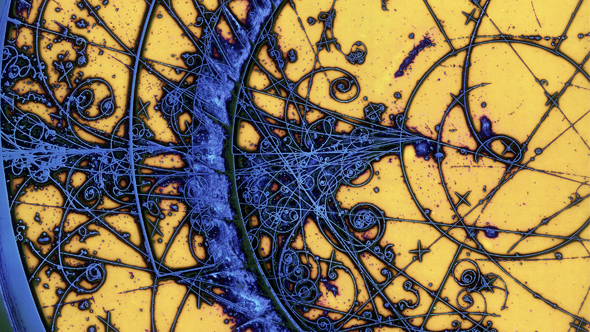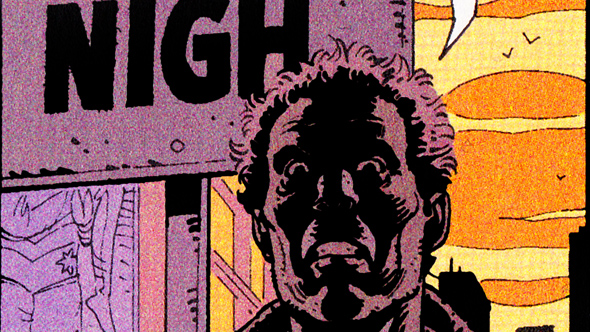
“Emancipation is for us the meaning of nihilism.” – Gianni Vattimo
What comes after nihilism? This question might seem impertinent given the actual state and trajectory of things. Everywhere traditional, reactionary, and localising ideologies compete, conflict and continue colonising and recolonising the discursive terrains of our political and personal lives. This scattered and unevenly distributed field of actualisation has made it increasingly difficult to maintain semblances of coherence at all levels. How then can we claim to grasp what comes after nihilism while our cultural-subjective fields are still littered by the decaying corpses of quasi-religious, religious and secular-romantic narratives that had previously promised us much but are delivering very little? Have we even begun to evacuate the spaces of reasoning which have led our species to the brink of social disintegration and ecological collapse? How can we be beyond something not yet fully actualised?
Despite the seeming lag in understanding our contemporary disarray, recent events – from the 2008 financial crash, the 2011 Fukushima Daiichi nuclear disaster, and the intensification of global climate change, to the ongoing international acquiescence of Israel’s occupation and destruction of Gazan communities, and the handling of protesters in Ferguson, Missouri – have demonstrated the hollowness of even our most cherished and guiding Western sentiments about democracy, justice, human progress. Instead we have entered a phase in which the cultural-subjective condition of nihilism has exploded beyond any local philosophical manifestation to become the objective condition of the world.
Simultaneously, the hardly digested lessons of our sciences are leading in the direction of the realisation of the ultimate purposelessness of existence. Successive discoveries from Darwinism, the heat death of the universe, artificial intelligence and the limitations of human cognition, to the demotion of introspective and phenomenological accounts of the world to second-string players.
If nihilism is in large part an unraveling of traditional structures of meaning, accompanied by the collapse of certainty, then scientific suggestions about the limits of human “knowability” and its supporting unconscious operations can only serve to intensify the nihilistic tendency. Meaning, value, truth, agency, and consciousness are being exposed as ghost-objects dependent on imaginal associations, previously (mis)taken as ontological rather than functional singularities.
Even as we disentangle our brains and the secrets of cognition we begin to realise just how little we diverge from our most primitive animal cousins in basic functioning and perceptive prowess. We are not the ultimate purpose of creation we thought we were. And in many respects we can no longer claim to be ecologically necessary or special. Whether we look to ancestral pasts or posthuman futures we are confronted with the same seemingly terrible lesson: it has all been for nothing. We were not intended, and we may not even survive the next 100 years. Wherever we scramble for reassuring fragments of meaning being imbued in the fabric of the cosmos we are confronted with just-so stories that we cling to despite having seen them evaporate like the oceans of the future beneath an exploding sun.
It is therefore tempting to answer that what comes after nihilism is sadness. The transcendental nature of norms and values has been scorched; our rationality has been shown to be ridden with biases, systemic errors, and, as is beginning to be made painfully clear, is probably a functional delusion. It may be that this is partly why we see so much depression and anxiety today: by turning these affective relations to corrosive truth into pathologies, the denial allows the rest of us to go on. But to ask what comes after is also to ask: what remains?
The world after nihilism is populous. What rests beneath our zombie delusions and mythologies are countless sensuous bodies. What is revealed is a world composed of material entities in energetic interactions that exist within a vast mesh of ecological metabolism. Bodies jostle and exchange in, against, across and through one another in what we could conceive as transcorporeal (‘across-body’). What is of value in this view is that while our cognitions are unreliable, shot through with myth-making, we nonetheless have our embodied sapience, the wisdom of bodies that are practically engaged in a world structured and coordinated by and as assemblages of other bodies.
The term transcorporeality is borrowed from feminist materialist philosopher Stacey Alaimo and is intended to help us frame the way the world is, to provide us with an ontology. Transcorporeal reality assembles all bodies as intimately implicated with one another such that the possibility of embodied contact between things, flows, relations and excitations – whether they are human or inhuman, geological or machine, animal or informational – remains the natural condition. The philosophical question of whether we can know reality ‘in itself’ is no longer our concern: materially and consequentially we are always already in corporeal contact with the real, even if our phenomenal experience and cognitive systems can never do justice to that contact.
In such a world bodies are thus choreographed activities rather than static objects, and they are always open to and composed of one another’s activities. Your body is in part the expression of genes and their organic machine code, a morphology that has responded to natural and urban environmental pressures and a responsive pragmatic necessity, foreign bacteria, climatic conditions, the sun, as well as a host of other bodies of both microscopic and cosmic scales. They are rhythmic compositions that synchronise and become dissonant, penetrate and are penetrated, embedded in and emerging from the crowded complexity of hot and cold tempos, conducts, demands, and needs. They are as much spaces and habitats as they are spaced and inhabiting. Above all, this means they are plastic and vulnerable.
After nihilism, then, are embodied realisations of and exposures to vibrant ecologies of being offering an ultimately untameable wilderness which we participate in on an equal footing with all other bodies, even if we have an unequal ecological effect. In order to cope-with and cope-within the wilderness of being we must abandon the charnel-house of meaning and its theological tyrannies once and for all. As coping-beings we must leave our reifications behind in order to engage in post-nihilist praxis: an ecologistics of tracing these rhythms and activities, their multiple couplings and decouplings, and taking responsibility for our way of cohabiting in, with and alongside other bodies.
Such a mutant pragmatism also recognises the practicality of cultivating a carnal ethics and corporal politics of vulnerable bodies capable of abandoning all essentialisms, all magical thinking, and to attend to the naked, porous materiality of the world. The death of God is a profound liberation; this sadness is the mourning for a ruined world we must leave behind. We are Nietzsche’s bastards.
We have suffered so much talk of ‘living in the end times’ with its paralysis of thought and action. Post-nihilist praxis refuses the sadness of nihilism along with the myopic comforts of pre-Catastrophic ideological certainties. We have already lived through the collapse of conditions for possibility of certainty, what RS Bakker calls “the semantic apocalypse”, and the ecological collapse has already begun: in this sense we are already living after the end of the world. And so amid the ongoing debates on how to resuscitate a disintegrating world that refuses to die we begin to sift through the ruins – as it is only from the ruins that we can rebuild.
…
This is only a sketch of what a post-nihilist praxis might consist. The post-nihilist tendency remains less a worked out position as it is a point of taking-leave. Variations of this tendency continue to be generated. See, for example, the Out of the Woods Collective, also in this edition, who have independently concretised the demand for a post-nihilist praxis in their discussion of the tactics and strategies of Disaster Communism. Theirs is an ecological politics that shares a family resemblance with our own position. Alternatively, and at the same time a transpessimism would equally be a post-nihilist praxis: the idea that the human species must become extinct by becoming something truly posthuman.
By Arran James & Michael Pyska | @dronemodule & @brightabyss









